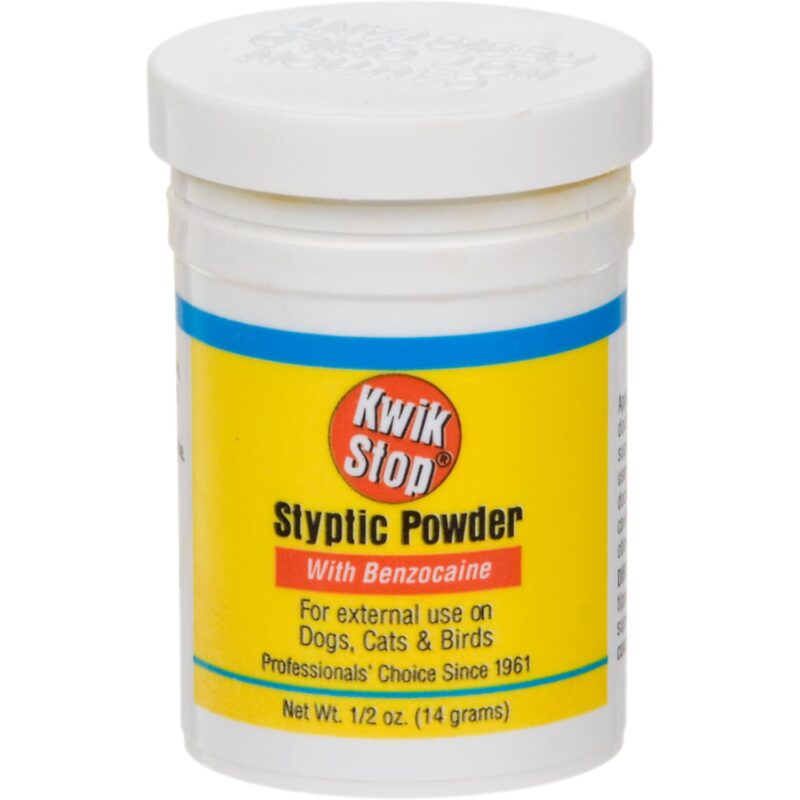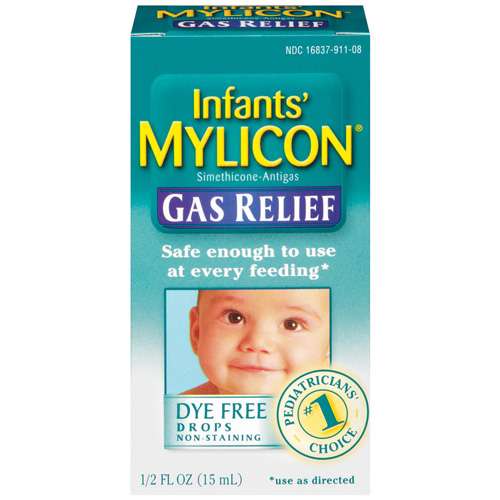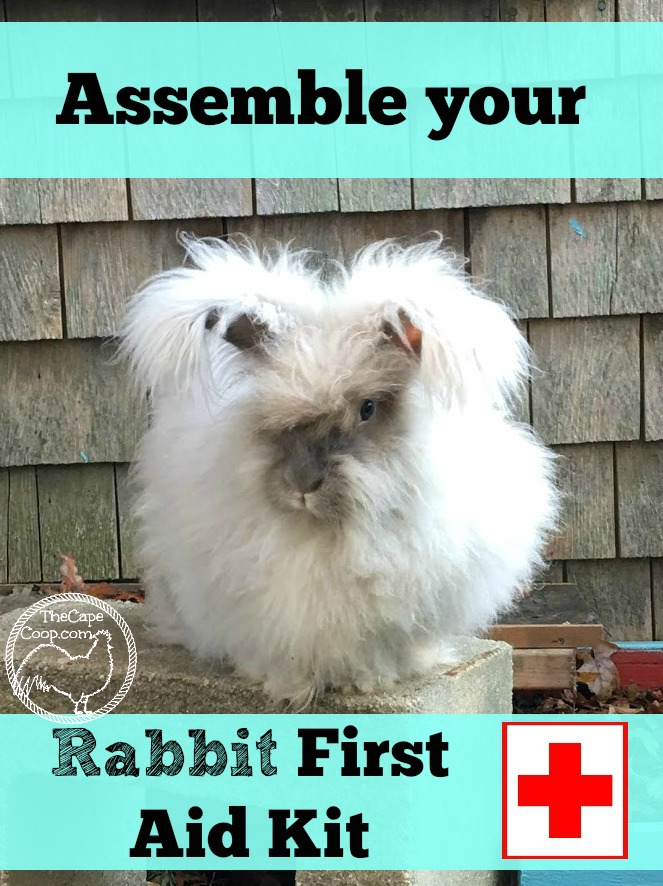---------------------------------------------------------
Rabbits in general are pretty low-maintenance, healthy animals, but you never know when an emergency or illness will strike. As a responsible animal owner, you want to be prepared to treat minor issues and illnesses. If you have all the items you need at hand, in one convenient location, you can get your rabbit on the road to recovery as fast as possible.
Please note these items will not replace the care of a qualified veterinarian.
If your bunny has a large open wound or has not eaten or pooped in 12-24 hours you should see a vet immediately! Other symptoms that warrant an immediate call to the vet: blue or pale gums, labored open-mouth breathing, losing consciousness, excessive diarrhea, seizures, or if you know your rabbit has eaten something poisonous.
So what should you have on hand to care for your furry friend?
Phone number for your local veterinarian
In case of emergencies or even just for advice. It’s also a good idea to have the number of an emergency vet or animal hospital you can call during non-business hours
Non-latex gloves and/or hand sanitizer
For you, to prevent the spread of germs between you & your bunny
Gauze Pads, Cotton Balls, Q-tips, & tweezers
For cleaning & bandaging wounds and cleaning ears/eyes
Vetrap Bandages & scissors
Vetrap is a self-sticking bandage perfect for treating animals. Keep some small scissors with them to cut the bandages

Vetericyn
Vetericyn is an anti-bacterial spray, used to clean wounds and treat infections. Vetericyn is safe for almost all animals so it is a really handy product to have on hand for any animal owner.

Antibiotic Ointment
Find one without pain relief, which can be too much for a tiny rabbit, to use on minor wounds
Nail Clippers
Carefully trim your bunny’s toenails regularly so she doesn’t scratch herself or rip a nail
Styptic Powder or Cornstarch
If you trim your rabbit’s nails too short, they will bleed. Dip the toenail in Styptic Powder (found at most pet stores) or cornstarch to stop the bleeding. Styptic powder should only be used on bleeding nails – do not apply to wounds on the skin

10 cc/ml Oral Syringes
Good for administering medicine or food/water if your bunny won’t eat
Baby Food
When your rabbit won’t eat, baby food is easy to feed with a syringe to help keep her strength up. Look for organic pumpkin or squash with no additives or preservatives. You will want to dilute it with water so it is runny. Use the syringe to VERY slowly put some food into the side of her mouth, giving her time to chew and swallow
Critical Care
A rabbit-friendly alternative to baby food is Oxbow Critical Care (get the one made for herbivores). It’s a feed made especially to help your rabbit recover from surgery or illness. You can use a spoon or syringe to slowly feed your bunny if they are reluctant to eat it.
Probios
A probiotic supplement that supports the digestive system. For when your rabbit’s appetite is decreasing, has an upset tummy, or is experiencing stress this can help restore digestive balance. Follow the instructions on the back of the container, but generally for rabbits, you will mix 1/2 tsp in the rabbit’s water daily for a few days
Preparation H
get some without pain relief, to reduce swelling from occasional cases of sore hocks
Mineral Oil
For treating ear mites, use a cotton swab dipped in mineral oil to gently clean the ear (do NOT insert the swab into ear canal)
Saline
to gently wash eye area with a sterile gauze pad
Small LED Flashlight
use a small flashlight to examine eyes, nose & ears
Infant Gas Medication
relieves minor gas issues. If your rabbit is refusing food, she could have painful gas building up. Rabbits can not burp or vomit so if their digestive system slows or gets blocked, gas can build up. Use your syringe to give your bunny 1 cc of drops every hour for about 3 hours

Papaya Vitamin Tablets
Helps hairballs move along the GI tract – give your bunny a tablet or two, once a week to keep hairballs from forming
Stethoscope
To listen to your bunny’s digestive system and monitor them for GI Stasis (click here to read more). Normal heart rate has a wide range of 130-325 beats per minute, so don’t be alarmed!
Instant Cold Packs
For helping to lower body temperature in a rabbit that is overheating
Heating Pads
For warming up a bunny that has mild hypothermia, don’t use it directly on the bunny, place the pad under a towel. Use a low setting, so you don’t burn her sensitive skin
Digital Rectal Thermometer & Petroleum Jelly
Lubricate the thermometer before inserting it. Normal body temperature should be between 101-103 degrees Fahrenheit, but the rectal reading should be 103-104 degrees. You can have your vet show you how to properly take a rabbit’s temperature







Diann Benafield
Thursday 8th of December 2022
Do you have the above information available to purchase so that I could print it out for my members to keep. Love this presentation.
Liz
Tuesday 13th of December 2022
I don't have it for purchase, but you are welcome to print it to give to your friends if you could just mention my website when handing it out that would be great :)
Allison brown
Thursday 2nd of September 2021
The cape coop is awesome thank you!!!!!!!!!!
Liz
Thursday 2nd of September 2021
Thank you so much! :)
Jo
Friday 22nd of January 2021
What are papaya tablets?
Liz
Friday 22nd of January 2021
They are digestive dietary supplements (for humans, but rabbits benefit from them too). You can find them in health stores or in the vitamin section of your drug store, but also online https://www.amazon.com/gp/product/B00028OSSU/ref=ppx_yo_dt_b_search_asin_title?ie=UTF8&psc=1
Anna
Friday 27th of March 2020
Hi! I love this article and it's super helpful. One thing I noticed that is really vital is that you mention a normal rectal temperature reading is between 103F-104F. It may be helpful to clarify (especially for new rabbit owners) that 104F is not within normal range but is considered slightly elevated and can be due to stress such as a trip to the vet's office or the discomfort of a health problem and that anything below 101F is considered low. If I were a new rabbit owner I might read the range you listed and think that if my rabbit had a 101-102F temperature that it was low, when in fact it's still within the normal range. :)
Liz
Friday 27th of March 2020
excellent advice Anna, thank you